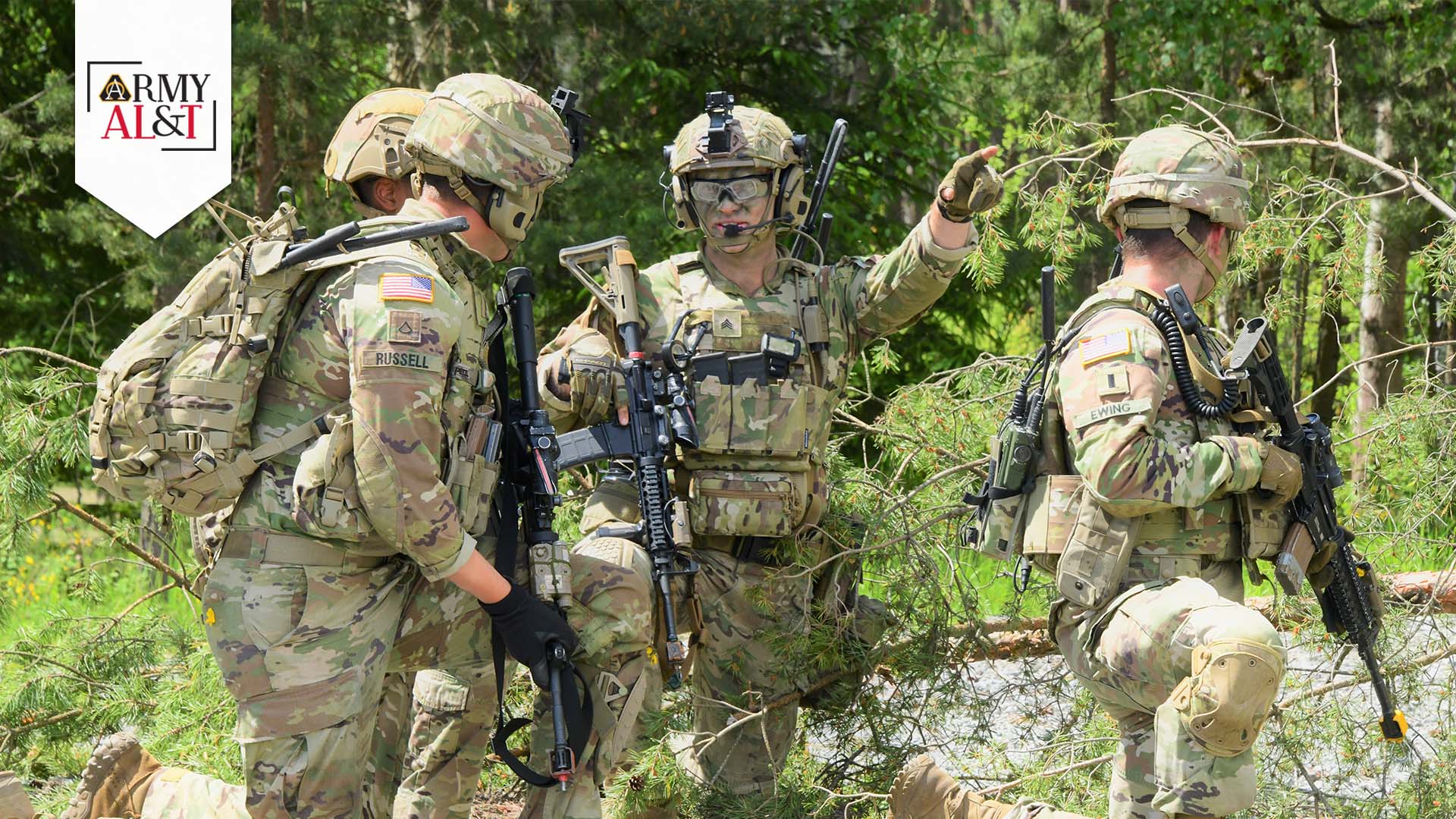
MIND MELD: Soldier touch point events provided critical feedback for the Army’s test community. (Photo Spc. Ryan Parrl)
CS23 enables Stryker squadrons to operate flexible network and situational awareness capabilities from inside the hull out to the area of operations on the ground, thanks to Soldier feedback from CS21.
by Matt Maier, Lt. Col. John Judy and Kathryn Bailey
Just three short years ago, the Army began implementing its capability-set process as a means to deliver better network capability to Soldiers. Beginning with Capability Set (CS) 21, the Army focused on providing Integrated Tactical Network (ITN) capabilities to multiple infantry brigade combat teams, beginning with the 82nd Airborne Division.
Fast forward to CS23, which is the latest iteration of the Integrated Tactical Network, now fielding to squadrons within the 2nd Cavalry Regiment (2CR) in Germany. Where CS21 provided dismounted network capabilities to multiple infantry brigade combat teams, the addition of CS23 enables Stryker squadrons to operate flexible network and situational awareness capabilities from inside the hull out to the area of operations on the ground.
The Army adopted the CS process to standardize what network capabilities get fielded by first conducting a preliminary design process one year in advance of the critical design review, which locks in a baseline. In between these two events are exercises, Soldier touch point events and a comprehensive technical test with oversight from the Army’s test community.
For the first time, three iterations of the Army’s network capability set process are concurrently in motion. These iterations feature the final CS21 fielding to the 4th Infantry Brigade Combat Team, 25th Infantry Division, which was recently activated as the 11th Airborne Division to posture U.S. forces for strategic advantage in Alaska’s harsh Arctic terrain. They also include current CS23 fielding to the 2nd CR and the 101st Airborne Division, which is the first divisional capability set fielding and initial network design efforts with armored formations for CS25.
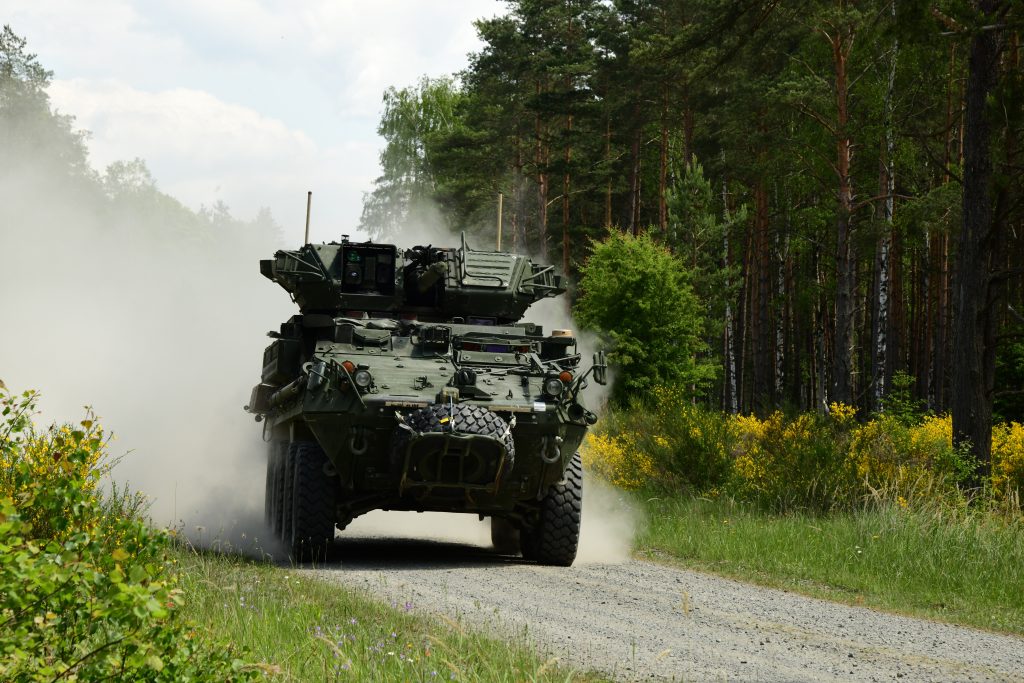
HEADED OUT: Stryker vehicles head to a live fire exercise, conducted by the 3rd Squadron, 2nd Cavalry Regiment, on June 1, 2022, at the U.S. Army’s Granfenwohr Training Area, Germany, which was the backdrop to the Army’s Operations Demo Phase 1. (Photo by Spc. Ryan Parrl)
CS23 ROLLS INTO THE FIREFIGHT
For now, all eyes are on CS23 and integrating Integrated Tactical Network into the 2nd Cavalry Regiment’s Stryker vehicles.
A recently completed live-fire training event in Vilseck and Grafenwöhr, Germany, teamed the 3rd Squadron, 2nd Calvary Regiment (3/2CR) with program developers and evaluators from the Program Executive Office for Command, Control, Communications-Tactical (PEO C3T), the U.S. Army Combat Capabilities Development Command C5ISR Center and the Army Test and Evaluation Command to assess and measure the operational effectiveness, suitability, and survivability of CS23’s Integrated Tactical Network, including cyber capabilities, as part of its Operations Demonstration (Ops Demo) Phase 1 with the unit.
PEO Ground Combat Systems (GCS)—which continues to provide a critical partnership to CS23 and beyond—mounted and integrated components of the Integrated Tactical Network into the vehicle.
Ops Demo Phase 1’s live-fire mission was a smaller scale demonstration, which provided opportunities for the unit to test the radios and end-user devices from both inside and outside the vehicle. For this event, the unit used the Integrated Tactical Network ’s PRC-163 Leader Radio for dismounted operations and the PRC-162 Manpack radio for both dismounts and inside the vehicles to communicate across the squadron.

FIELD TESTED: Ops Demo Phase 1’s live-fire mission allowed Soldiers to test radios and end-user devices from inside and outside the Stryker vehicles. (Photo Kathryn Bailey, PEO C3T Public Affairs)
EMPHASIS ON INTEGRATION
Army developers are now taking lessons learned from the event to prepare 2CR for its Combat Training Center rotation in early 2023, called Dragoon Ready. The exercise will feature multiple squadrons in a large-scale operational force exercise, which will push the boundaries of the network even further to help the Army make a good fielding decision based on the results of that exercise.
The Integrated Tactical Network provides a simplified, independent, mobile network solution comprised of a commercial solutions kit that can be rapidly inserted into the existing tactical network. These capabilities provide commanders with flexible, secure and resilient communications across echelons and will be pivotal to 2CR’s mounted, highly mobile missions as part of their arsenal within the European Command area of operations.
“The biggest thing about ITN is that it is truly an integrated tactical network,” said Staff Sgt. John Mock, 3/2CR network communications officer-in-charge of network integration for the unit. “We aren’t using independent systems that are great on their own but ultimately don’t talk to one another.”
With the addition of CS23 Integrated Tactical Network capabilities, Soldiers are able to access cellular hotspots for their vehicles, which allow mounted Soldiers to connect to cloud-based resources with a secure VPN over host nation cellular services as part of their primary, alternate contingency and emergency plan.
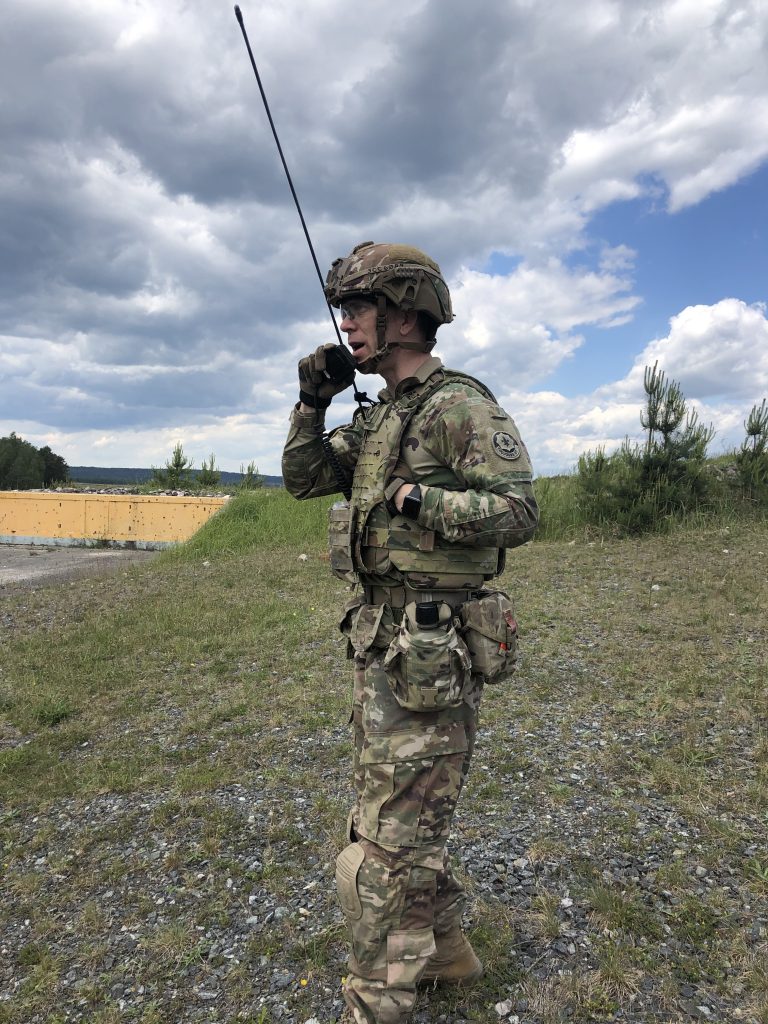
CHECK IN: A Soldier conducts a radio check using a PRC-163 Leader Radio immediately following a live fires exercise. The event generated user feedback and key instrumented data for iterative improvements to Capability Set 23’s Integrated Tactical Network. (Photo by Kathryn Bailey, PEO C3T Public Affairs)
CS23’s Integrated Tactical Network also provides new Wi-Fi and updated GPS vehicle routing capabilities, and multiple-input and multiple-output radios, which allows high-speed data exchanges in both static and mobile command posts.
Radios are the primary capability used for Integrated Tactical Network communications across the echelons, and for this exercise, the 2CR “Wolfpack” platoons used the PRC-163 Leader Radio for dismounted operations and the PRC-162 Manpack radio for both dismounts and inside the vehicles.
“The ITN is turning the corner on line of sight radios, going back to post-Vietnam, so that now we are able to transmit in and around terrain and armored vehicles,” said Sgt. Maj. Christian Bearden, who is in charge of all operations processes and establishing the main command post. “If the radio is the most casualty producing weapon on the battlefield, we must have a radio that provides the capabilities that we need.”
The radios are connected to the Nett Warrior—a handheld, cell-phone-like device—providing real-time, map-based position location information to Soldiers across all echelons.
“With the ITN, we gain more [position location information] and thus more survivability,” Bearden said. “That is a game changer for us.”
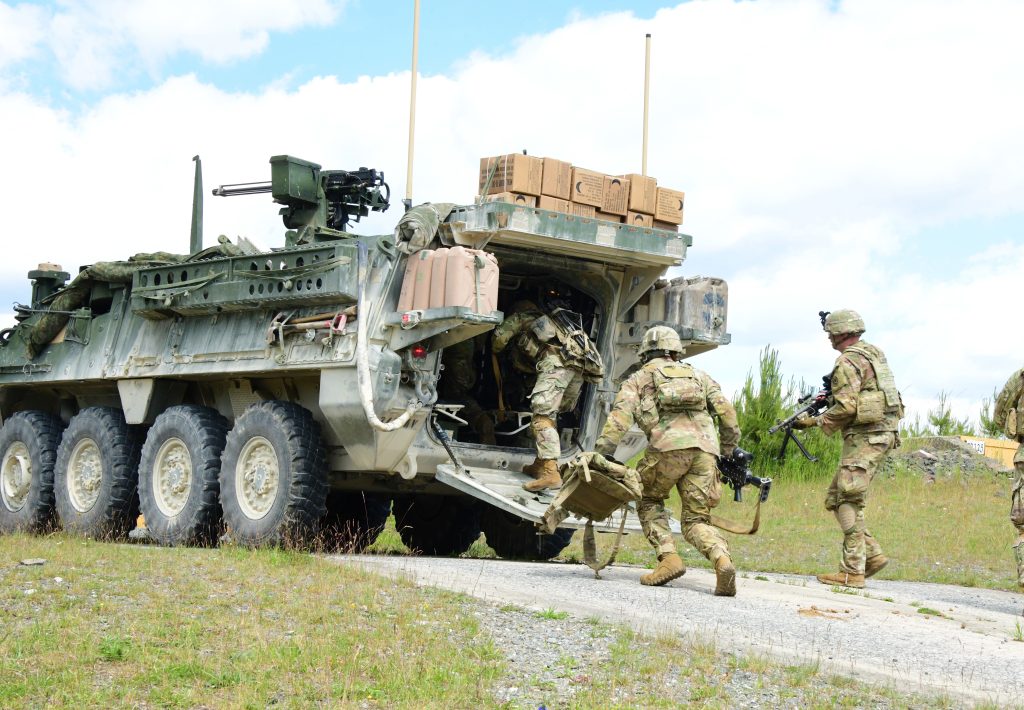
MORE POWER: Ops Demo 1 identified that—under certain conditions—Stryker vehicles’ power requirements need additional improvement. (Photo by Spc. Ryan Parrl)
The primary waveform used with the Integrated Tactical Network is the TSM waveform, which is a commercial mesh waveform that requires line-of-sight and provides a multinode relay, where every radio is a repeater for all network traffic. Providing simultaneous voice, data and position location information, TSM operates in the secure but unclassified network environment, which enables encrypted data to be transmitted over military or commercial networks, the Internet, cellular networks or compatible but non-military waveforms.
The 3/2CR initially received CS21 Integrated Tactical Network as a means for the unit to train on the radios and handheld devices, which they used during the multinational exercise Saber Strike 22 conducted in February.
“We conducted a 14,000 kilometer road march from Germany to Latvia,” Bearden said. “You’re not going to see that with any [continental United States] organization. It provided a great perspective about how ITN communications works and how we were able to communicate across long distances while making a large-scale movement.”
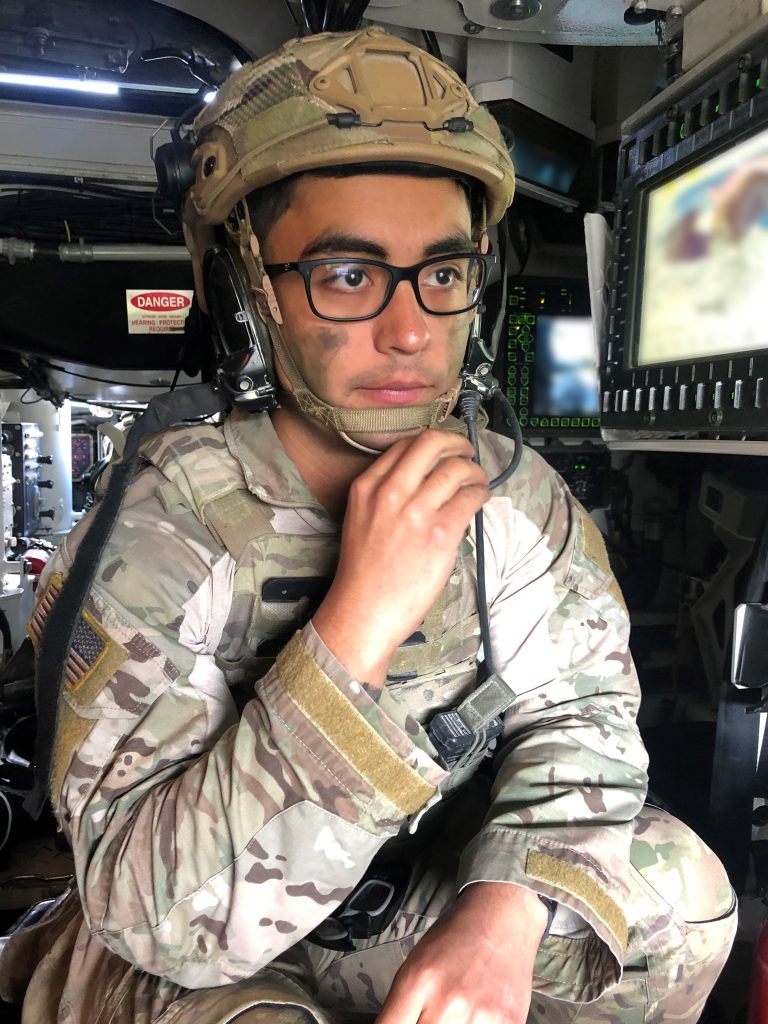
CALLING ALL UNITS: The PRC-162 Manpack radio and PRC-163 Leader Radio for dismounted operations were used during the exercise. (Photo Kathryn Bailey, PEO C3T Public Affairs)
Unit leaders compared using CS21 versus CS23 in their recent live-fire exercise. “Between our initial CS21 Integrated Tactical Network fielding and CS23 Ops Demo, the key points we brought up, whether large-scale problems or small, such as placing a button in a certain place, have been implemented,” Mock said. “We see noticeable improvements between the two that are benefiting us.”
One area identified for additional improvement during Ops Demo 1 was power requirements for the Strykers under certain operational conditions; specifically, the unit could not maintain power during the silent watch portion of the exercise where the Strykers shut off and run on batteries while doing night operations. Leadership and developers are working with PEO GCS to incorporate these lessons learned, with the understanding that integrating modern equipment onto the unit’s legacy flat-bottom Strykers could result in power issues. Future capability set fieldings planned with other units take this issue into account, and the Integrated Tactical Network will be integrated into more modern vehicles.
The capability set team will continue to work with the 2CR to identify potential options using legacy vehicles.

WORK BETTER TOGETHER: You can’t just hand a kit over and say “make it work” anymore—only full cooperation with Soldiers from the beginning to the end of the development process will be truly successful. (Photo Kathryn Bailey, PEO C3T Public Affairs)
TRAINING WITHOUT END
Throughout the CS21 and CS23 fielding, the 3/2CR has received new equipment training from PEO C3T trainers. Because of this support the unit has been able to conduct their own training and troubleshoot Integrated Tactical Network equipment when needed.
“My Soldiers were in five months of solid classes and actively working with the equipment to learn it from the inside out,” Mock said. “We’ve gotten to the point where we’re less reliant and dependent on the field service representatives. We can handle the technical issues ourselves.”
The leadership and development teams under PEO C3T have learned holistically that by applying those training lessons learned from CS21 into CS23, Army schoolhouses must be brought in to begin institutionalizing training across the force as more units continue to receive capability set fielding.
However, institutionalized training is not limited to the units receiving the full Integrated Tactical Network kit. More than 300 additional units have or will have specific Integrated Tactical Network components, such as radios, which are referred to as capability-set-enabling equipment. These units still require the appropriate equipment training to enable communications and information sharing across formations.
Soldier feedback is making a difference institutionally, not only with technology, maturity and operational relevance, but also with guidance on how Soldiers should receive initial and refresher training.

ONLY THE BEST: Staff Sgt. John Mock and Sgt. Maj. Christian Bearden meet in the command post during the unit’s live fire exercise to discuss the concurrent Ops Demo Phase 1. “If the radio is the most casualty producing weapon on the battlefield, we must have a radio that provides the capabilities that we need,” Bearden said. (Photo by Kathryn Bailey, PEO C3T Public Affairs)
CONCLUSION
The capability set process has turned the old way of technology development and fielding upside down. In the case of CS23, it is no longer acceptable to hand a kit over to a platform unit and tell them, “This is your network; make it fit in your vehicles.”
Only by working with the unit from the beginning of the process to assess how they conduct operations, what technologies will enhance the success of the operations and what will fit in small spaces, could Integrated Tactical Network have been integrated into Stryker vehicles. As the multi-organization capability-set team continues to address lessons learned from Ops Demo Phase 1, they are actively preparing for Ops Demo Phase 2, which will include a greater cyber component, featuring a red team to test the unit’s systems to prevent adversarial access.
As a critical precursor to CS25, which will integrate the Integrated Tactical Network for armored brigade combat teams, CS23 is helping to refine the unique network and communications needs of on-the-move operations. For now, equipping the unit in charge of full spectrum operations throughout the European Command’s area of responsibility with the latest ITN iteration remains a critical and timely priority.
For more information, go to https://peoc3t.army.mil/c3t/.
MATT MAIER is the project manager for Interoperability, Integration and Services at PEO C3-T, where he oversees multiple network modernization product manager organizations and the development and integration of the Army’s network capability sets. He has an M.S. in systems engineering from George Mason University and a B.S. in electrical engineering from Virginia Tech. He is also a graduate of the Senior Service College Fellowship program from the Defense Acquisition University, and holds certificates in computer, information, and software intensive systems from George Mason University.
COL. JOHN JUDY is the product manager for capability set development, assigned to the Project Manager for Interoperability, Integration and Services at PEO C3T, and is responsible for ensuring all the different systems work together as one grand tactical network deployed to the unit from an architectural perspective. He holds an MBA in system acquisition management from the Naval Postgraduate School and a B.S. in computer science from the University of Georgia. His military training and education includes the Army Airborne School, the Armor Officer Basic Course, the Scout Platoon Leader’s Course, the Signal Captain’s Career Course, the Recruiting Commanders Course, Naval War College, Acquisition Officer Basic and Intermediate Qualification, and numerous Defense Acquisition University courses culminating in a Defense Acquisition Level III certification in program management, and a Level I certification in information technology. He also holds a Project Manager Professional certification.
KATHRYN BAILEY is a public communications specialist for Bowhead Business & Technologies Solutions, assigned to PEO C3T. She is the lead public affairs representative for Project Manager Tactical Radios and Product Manager Capability Set Design, under Project Manager Interoperability, Integration and Services. She has a B.A. in communications studies from the University of Maryland.







